Tukuyu to Iringa - 2nd March - 2011 - 8th March 2011
The border crossing went smoothly and we headed for the small town of Tukuyu for our first night in Tanzania. The landscape was lush and tropical and we drove through enormous banana and tea plantations. We stayed in a nice community campsite and met up with an English/South African couple heading south. It was great to swap tips and stories about each other's routes.
From there we had a couple of nights at a farm just south of Iringa which had a great french restaurant on site. However, the next day Jerry developed a bad back and we holed up at another campsite just outside Iringa for a few days rest and recuperation.
Ruaha National Park and back to Iringa - 9th March 2011 - 13th March 2011
We weren't sure how Tanzanian parks would measure up to some of the parks we have spent time in in Southern Africa. However, we really enjoyed Ruaha. The scenery was quite beautiful with the Great Ruaha River running through a valley surrounded by hills. Magnificent baobabs lined the tracks and you could drive though woods and alongside the river.
We stayed in a little tin banda (round hut)- very hot but in a lovely spot on the river. We had various guests in camp - including a very curious giraffe. Each night we were serenaded by lions - sometimes from very close by and as the sun came up we went exploring. The lions proved more elusive in the day though we did see a couple of males in the river bed and a solitary male in the forest. But we saw hundreds of elephant, loads of giraffe and plenty of antelope and zebra. We also saw some wonderful birdlife, the highlights being a Giant Kingfisher, a Goliath Heron and a Verreaux's Eagle Owl as well as some beautiful cranes and storks.
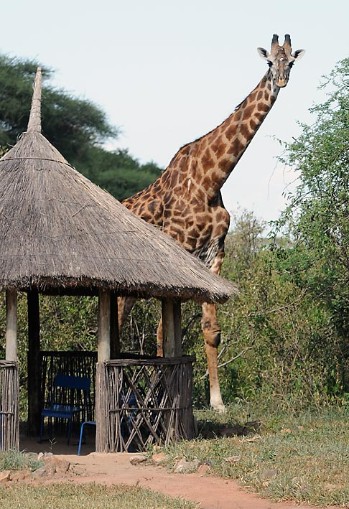 | 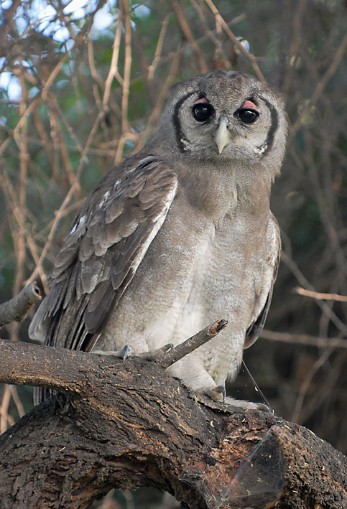 |
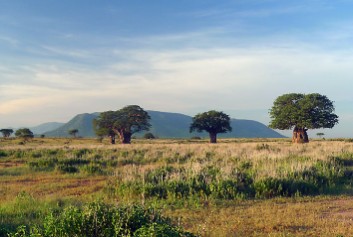 | 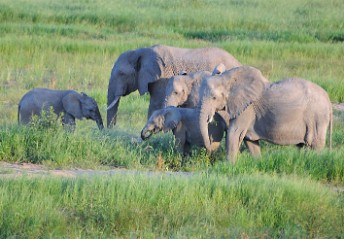 |
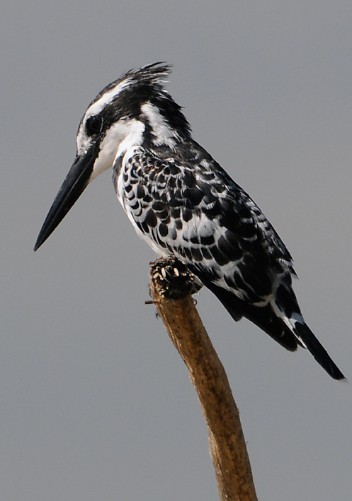 | 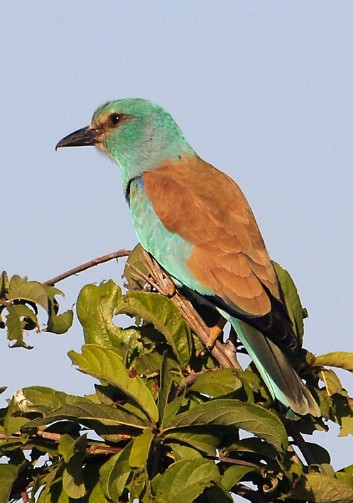 |
Udzungwa Mountain Park to Dar es Salaam - 14th March 2011 - 18th March 2011
After a very quiet night on the western side of the park - not only were we the only people in the campsite but we couldn't find anyone to pay either - we moved to the more developed eastern side.
We stayed at a great place called Hondo Hondo named after the local name for an endemic hornbill. The next day we took a hike up to a waterfall in the park. It was like walking through a rain forest, very hot and humid, and the path is steep so it was tough going but after two heavy nights of rain the waterfalls were in fine form. You can stand on the rocks on the top and watch the water plummet over the edge. The forest is the home of various monkeys and we saw red and black and white Colubus relaxing in the trees. We also caught a glimpse of the rare local Mangabey, which amazingly was only discovered in 1997.
The park is something of a bio-diversity hotspot. Four of the monkey species here are endemic and there are some other weird and wonderful creatures too. One is a type of partridge now only found in Asia. Apparently it was discovered by chance when a research team noticed some unusual looking feet in their "chicken" stew. There is also a rare toad which gives birth to live young and lives in the spray of a particular waterfall in the park. Unfortunately when the water was diverted to a new hydro-electric plant it's home range shrank to about 100 square meters and they had to put in sprinklers!
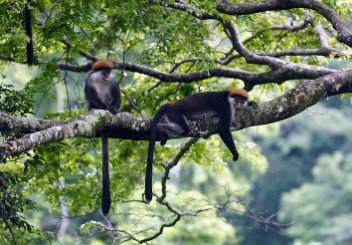 | 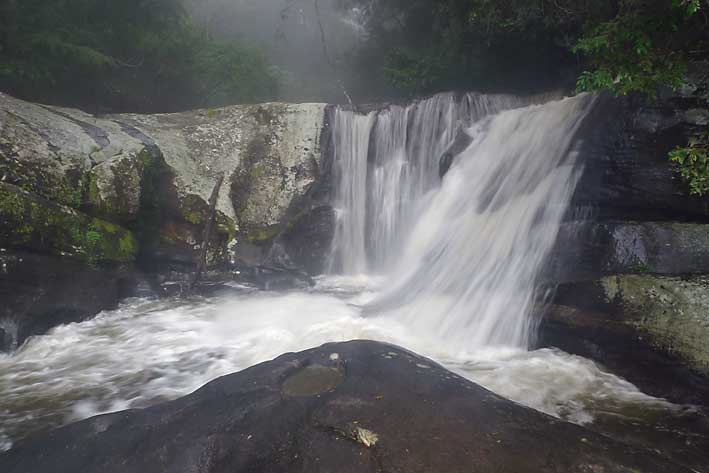 |
From Udzungwa we drove towards the coast and Dar es Salaam. It was a long day but we did drive through Mikumi national Park and saw elephant and giraffe from the road. We navigated the (in) famous Dar traffic relatively successfully and made it to the ferry to the south beach, where we were planning to stay as the sun set.
Zanzibar - 19th March 2011 - 22nd March 2011
Well we hadn't planned on visiting Zanzibar, we thought it may be too touristy, too expensive and too full of people trying to sell us things we didn't want. But we decided to give it a go ... and I'm glad we did.
We spent four days in Stone Town. We wandered around tiny little streets of crumbling buildings often with with elaborately carved and studded doors which look as though they will probably still be standing long after the building is a pile of rubble.
We did all the tourist stuff; gorged on seafood, went on a tour of a spice plantation, bought some tat (sorry souvenirs) ... and really enjoyed it. It's a peaceful but vibrant place. It was lovely to see all the families with young kids out strolling the streets at night and watch the boys practicing their back flips and playing piggy in the middle on the beach.
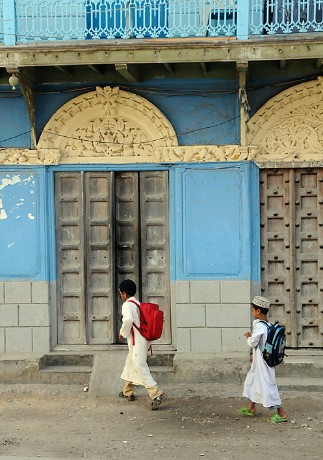 | 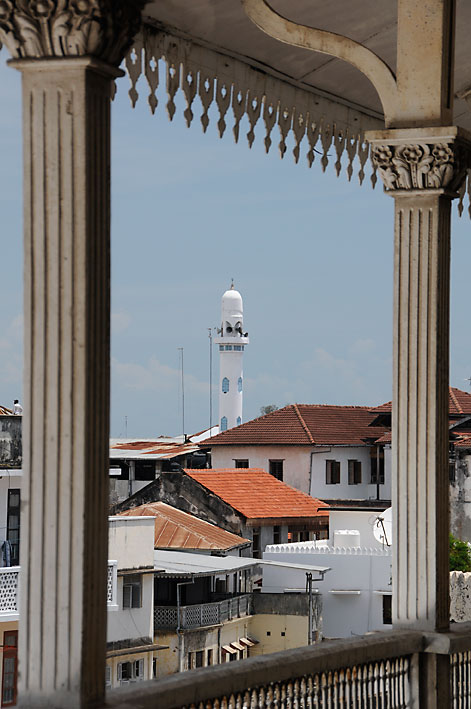 |
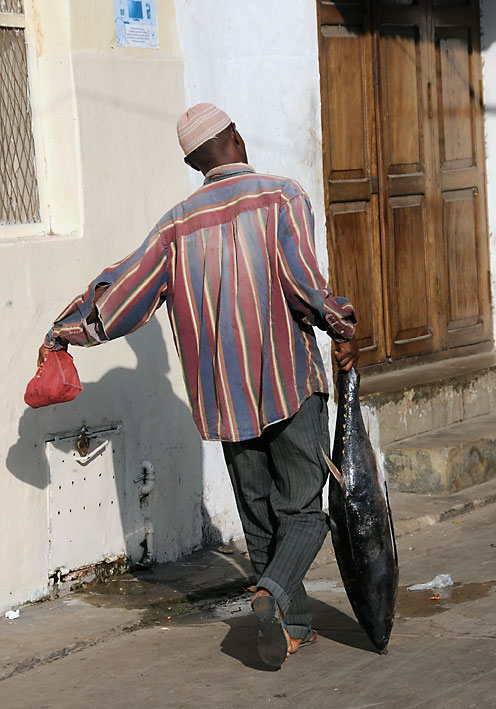 | 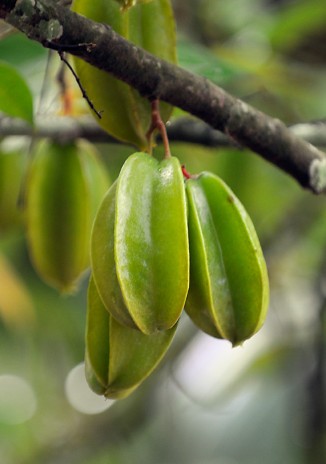 |
Mafia Island - 23rd March 2011 - 26th March 2011
To reach Mafia we flew in a tiny plane over turquoise water dotted with little white islands. It was real picture postcard stuff.
Mafia can be a little expensive with most tourists visiting high-end lodges so we stayed the first night in a lodge in the main town (which is still on the beach!). I would describe this as a "one horse town" but there was no horse, just a few chickens.
We treated ourselves to a couple of days diving in the south of the island which was excellent. Loads of fish and beautiful coral. We saw a grouper which wasn’t much smaller than our Land Rover. We ate at the house of an enterprising local lady who was doing huge and beautiful fish/seafood meals for less than the price of a beer in one of the lodges.
We finished on a real high taking a boat out to go snorkeling with the resident whale sharks in the bay. We spent nearly two hours in the water with one of these magnificent beasts which was nearly 20 feet long – it was a truly once in a life-time experience.
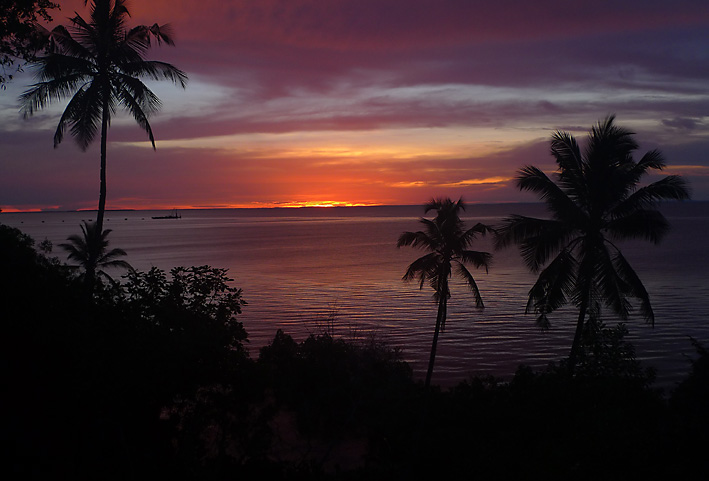 | 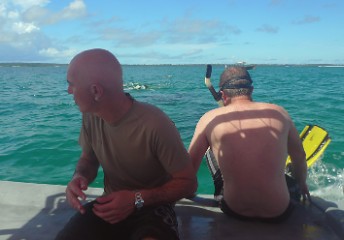 |
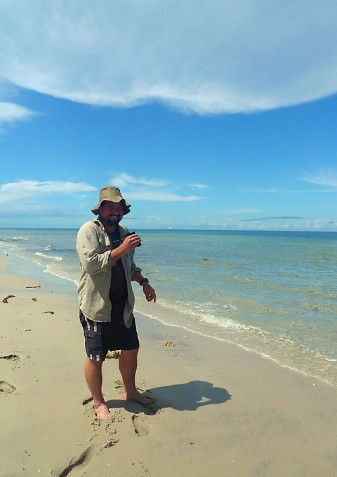 | 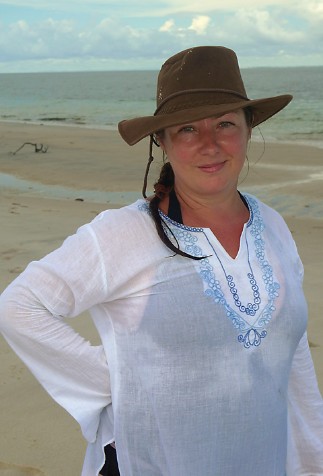 |
Dar es Salaam to Bagamoyo, Moshi and Arusha – 27th March 2011 – 30th March 2011
We arrived back in Dar and were reunited with our car. Luckily our passenger (a rat) seemed to have taken the hint and moved out in our absence.
We had originally planned to meander up the northern coastline of Tanzania but having been on Zanzibar and Mafia for over a week we felt we had had more than our fair share of beaches and it was time to push on. We therefore headed straight for the northern parks, overnighting at Bagamoyo en route.
In Moshi we had hoped to catch a glimpse of the great mountain itself but it was not to be. It was very, very wet up there and the clouds didn’t lift at all during our visit. There was a terrific storm that night and we did wonder what it must be like up on the mountain amongst all that weather.
Next stop was Arusha and various chores. Jerry was able to replace our shortwave radio which had given up the ghost in Malawi. We picked up some shopping and booked our special campsites in the Serengeti. The staff at TANAPA’s headquarters obviously aren’t used to dealing with independent travelers (as opposed to tour companies) but we managed to arrange what we wanted.
Lake Manyara -31st March 2011 - 2nd April 2011
This was such a beautiful park. We loved it. As you enter it you drive through an amazing fig forest which looks like something from the land that time forgot. Beautiful blue monkeys peer out of the trees at you and it is deliciously cool.
We opted to stay in a private campsite in the south of the park and enjoyed the splendid isolation.
On our second day we were lucky enough to see the park's most famous inhabitants; the tree climbing lions. These inventive creatures have been studied for years and no-one is quite sure why they climb the trees which, although these are cats, is not an easy thing for a creature weighing what they do. The favoured theory is that there was a plague of flies perhaps a few generations ago and it now a behavioural thing with no apparent logic. It takes the cubs some months of practice to learn the skill and from the look of the youngster we saw trying to climb down a trunk backwards before he fell off he still had a way to go.
The other thing we really enjoyed about Manyara was the elephants. These magnificent creatures are often very intimidating if you are in a car but these weren't bothered by us at all, squeezing past us and the undergrowth to get where they wanted to go.
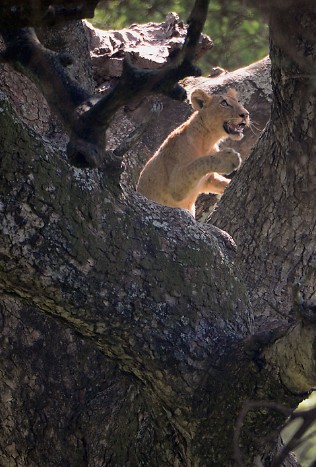 |  |
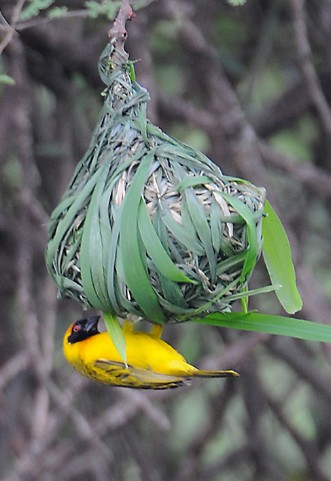 | 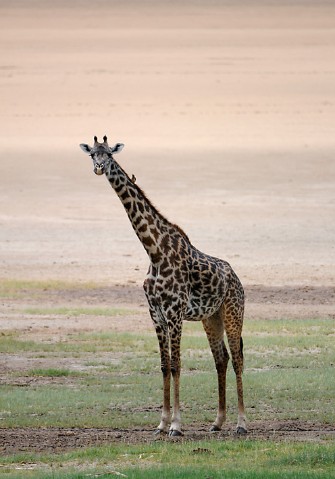 |
Karatu – 3th April 2011 – 4th April 2011
Karatu is the jumping off point for visits to Ngorongora. We were planning to spend a couple of days here and thought it would be interesting to visit a local tribe, the Hadza, whilst we were in the area. These people are some of the last genuine hunter-gatherers in Africa, living a nomadic lifestyle and surviving entirely on what they catch and collect. Our guide book suggested it was possible to pick up a local guide and pay a visit to an encampment, and even go on a hunt with the Hadza.
The drive out to the area was beautiful but I suppose we should have been prepared for the inevitable commercialisation of the “tribal visit”. What our guide book had portrayed as payment of a fairly nominal fee to a village council had escalated into $100. Not wanting to buy into what was essentially a few individuals exploiting the fact that tourists would pay to visit their neighbours we turned the car round and went back to Karatu.
Ngorongoro Conservation Area and Serengeti National Park – 5th April 2011 – 9th April 2011
We had debated whether we should visit this area. On the one hand it is perhaps the most famous safari destination in Africa, on the other it is ferociously expensive and, well, we have done a lot of game viewing and seen some amazing things. In the end we decided to bite the bullet and put the cost out of our minds.
We thought long and hard about how to get the most out of what had to be a short visit and ended up staying two nights on the crater rim to get a full day in the crater itself. After a night spent listening to sporadic rain showers we woke at 5.15 am to a dense fog. This made the drive to the crater gate and the descent to the floor a little precarious and it rained steadily for most of the morning but even so it was still an amazing experience. The crater is only 20 odd kilometres across and within that area there is an amazing density of game drawn by the fresh water and good grazing. We saw our first lions within minutes. A couple of splendid males watching the sun come up. Within the next half hour or so we had seen hyena, rhino and elephant as well as lots of plains game and amazing bird life, including lots of flamingos on the lake at the centre of the crater floor.
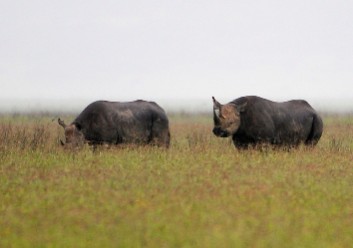 | 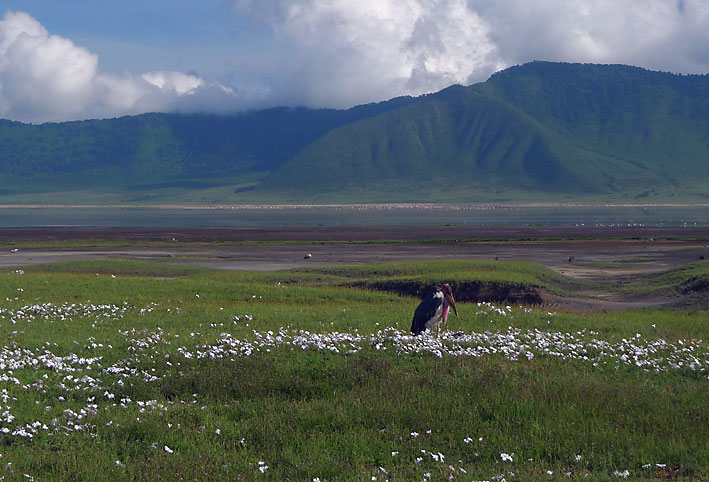 |
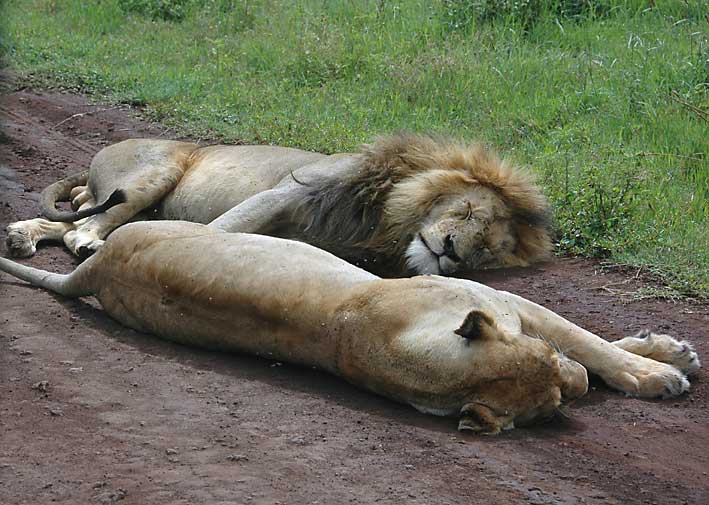 | 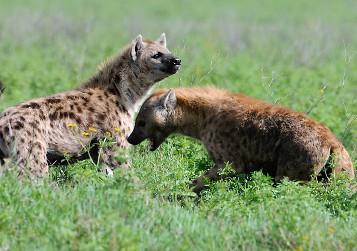 |
Later in the day the sun came out and we spent an hour of so with a big pride of lions enjoying the afternoon sunshine.
Highlights for us were:
-
Watching an (unsuccessful) attempt by a pair of cheetah to stalk and chase down a Thompson’s gazelle. The chase lasted a good 30 seconds and they kindly sprinted past the car in one direction and then turned and ran past it again.
-
An amazingly close encounter with a huge bull elephant who was browsing in the Lerai forest and emerged just inches from the car. These beasts have some of the biggest tusks on record due to the high mineral content in the soil here.
-
A mating pair of lions right alongside the car (though Jerry couldn't be persuaded to wind his window up).
-
Lots and lots of hyena including a clan with young.
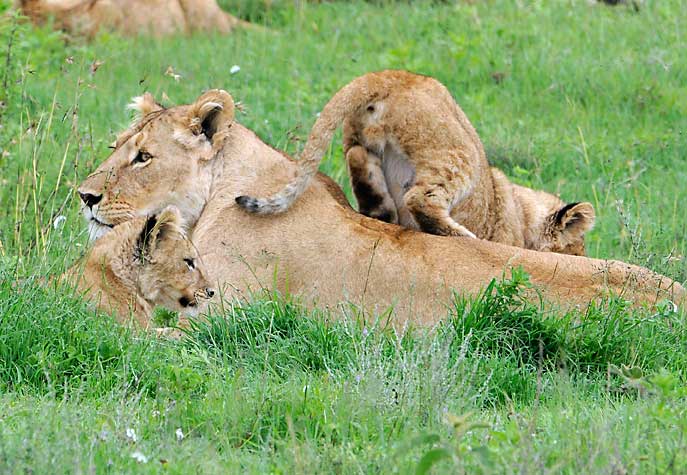 | 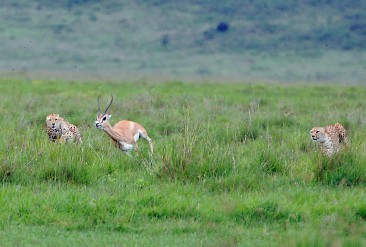 |
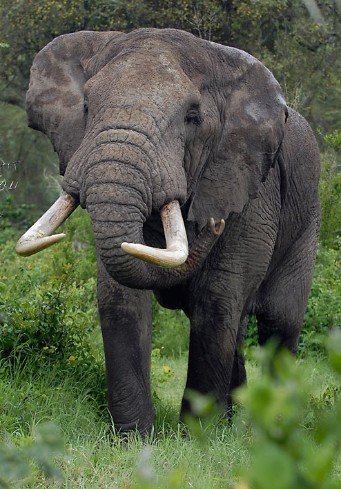 | 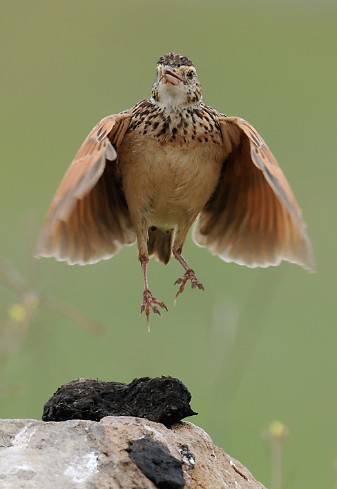 |
We got up the next morning as soon as it was light and headed for the Serengeti. The game movements here are all seasonal and we knew that at this time the plains game (and therefore everything else) would be concentrated on the southern plains and in particular in the area around Lake Ndutu. This involved quite a detour but we had planned our gate entry and exit times to allow this. It was well worth it.
We turned off the main road and drove across small bush tracks. We saw lots of hyena lounging in the mud to keep cool en route and as we neared the lake a cheetah strolled across our path.
The lake itself was beautiful. We watched a small family group of lionesses and cubs trying to get some shade in the bushes around the lake shore. Down at the water's edge we saw a huge herd of wildebeest nervously milling around amidst the remains of some of their relatives. The lions lounging a few metres away clearly just ambled to the lake shore whenever they fancied a meal. There was a horde of Maribou storks and vultures waiting for their next meal.
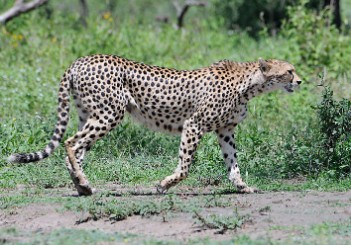 | 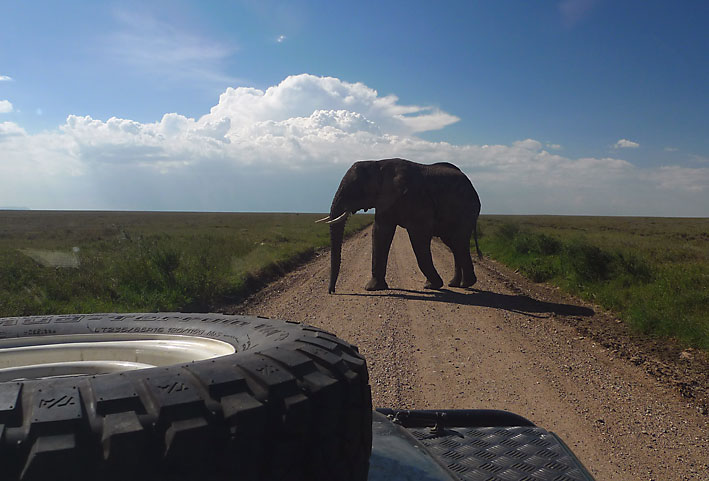 |
Soon time was catching up with us and we needed to get to the gate and cross into the Serengeti proper. The scenery here is flat with almost no vegetation and we could see antelope, zebra and wildebeest stretching into the distance on either side. A shape loomed in the distance and walking down the middle of the road was a huge bull elephant. He saw no particular reason to move for us and we pulled to a halt. When he was ready he passed the car peering in through the windows at us. We saw a couple of lions relaxing on the kopjes a few miles further on and headed for our campsite for the night. Not long after sunset a scuffling the other side of the car revealed a slightly bemused looking buffalo but he soon bolted for the river.
Over the next day or so we saw plenty of hyena and a cheetah alongside the road and a lot of elephant and giraffe. We drove out along the western corridor where wildebeest and zebra were starting to congregate in preparation for the famous river crossings in July. We tried to get down to the river but the tracks, which had obviously not been used since the previous year, had all grown over.
In summary it was not the most prolific game viewing we have experienced and even though this was low season there were more vehicles than we were used to but the scenery is the stuff of wildlife documentaries. It was an expensive trip but worth it to see such an ionic place.
Mwanza to the Rwandan border - 10th April 2011 – 14th April 2011
Mwanza is a sleepy town on Lake Victoria. We both felt the need for a bit of a break and having checked ourselves into a nice little hotel with wi-fi, cable TV air-con and a fabulous restaurant we found it hard to tear ourselves away.